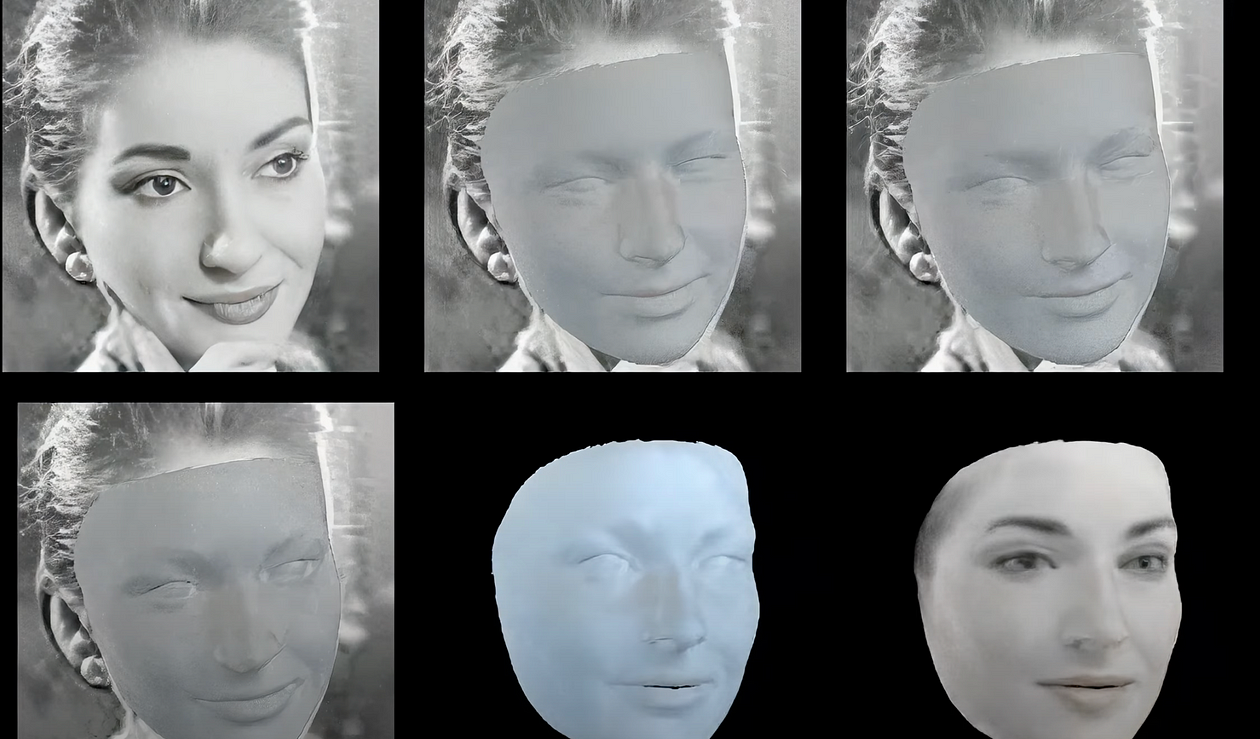
My work examines what it means to be posthuman in the digital afterlife, how AI personas of the dead are being created as a means to cope with the grieving process, and whether AI technology can faithfully recreate the essence of the deceased for posthumous memorialization.
AI expands the possibilities of commemorating the deceased and managing the grief of those left behind, complementing, or replacing formal structures of faith and belief systems, and establishing photographic practices that have proliferated all aspects of society, not least for the practice of memorializing the dead.
How has our relationship with photographic images changed with AI? What are the implications of these changes in our understanding of human essence as it relates to the photographic image? Why do AI death tech companies use the term essence as a barometer of technological innovation in digital afterlife creation? What are the ramifications for big tech companies facilitating communication between AI personas of the deceased and the bereaved? Is there a potential for AI personas to convey essence in new ways and perhaps create a new but artificial essence that represents the deceased in the digital afterlife, therefore replacing the still photograph as an identity referent and vessel for memorialization?
The digital afterlife is the digital extension of life after physical death and challenges the notion that death is final. The digital afterlife is a continuation of an active or passive digital presence after physical death.
Digital afterlife creation provides the possibility of an “enduring biography”1 that is grounded in a person’s digital legacy. This digital legacy can take many forms, including text messages, photographs, videos, social media posts, online memorials, and AI chatbots or avatars that mimic the deceased. The proliferation of digital technology means that the bereaved can construct a more comprehensive and multidimensional portrait of the deceased, one that can evolve and grow over time as new digital artifacts are added and new technologies are invented, such as artificial intelligence.
Death tech companies like StoryFile and HearafterAI are at the forefront of an AI-assisted grieving trend that preserves the digital legacies of the deceased and is changing the way we memorialize the dead. The digital afterlife industry is a commercially driven sector. The dead are digitally mediated within our everyday technologies to provide an ongoing relationship between the living and the dead. In our digital society, death is mediated, not through prayer but through Facebook, WhatsApp, chatbots, and animated avatars created from still photographs.
The more we interact with digital technology, the more our digital selves evolve into realistic representations, with the help of AI. The term ‘essence’ has been used by multiple AI death tech companies to describe the creation of a unique and individual legacy of the deceased that can only be created with AI, some going as far as rubbishing personal memory recollection and “passive photo albums” as inferior to the new AI technology that creates “interactive StoryFiles” and “recounting memories won’t capture the fundamental essence of the relationship.”
Ginger Liu MFA is the founder of Ginger Media & Entertainment and researches artificial intelligence and visual arts media — specifically death tech, digital afterlife, AI death and grief practices, AI photography, entertainment, security, and policy, and an author, writer, artist photographer, and filmmaker. Listen to the Podcast — The Digital Afterlife of Grief.
Ginger Liu is a writer who covers the latest developments in artificial intelligence, entertainment, and art.




